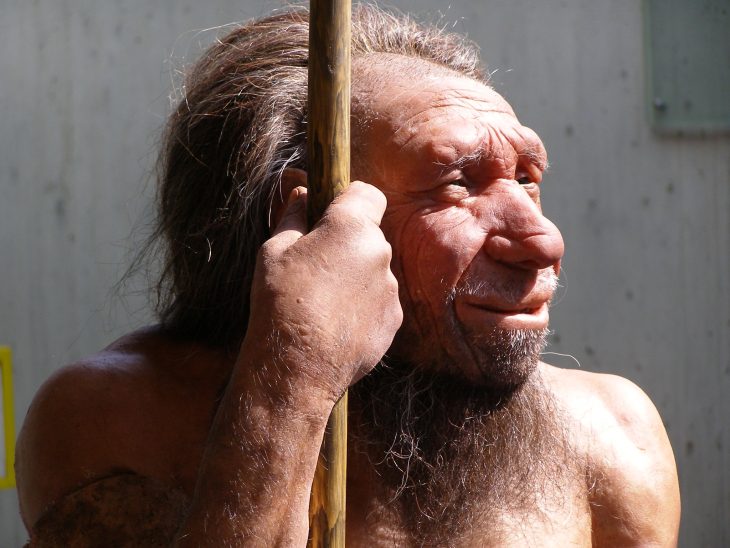
As our closest extinct relatives, we know more about Neanderthals than any other early human species. Smart, skillful, and strong, these now-extinct humans lived with modern humans and even produced offspring with them. To this day, many people have Neanderthal DNA in their bloodlines. Popular media depicts the Neanderthals as savage and primitive, but modern science has since proven these beliefs wrong. Find out more about our intriguing ancestors with these Neanderthal facts.
- Most studies indicate that Neanderthals diverged as a species from 315,000 to 800,000 years ago.
- The oldest documented Neanderthal fossil dates back to about 430,000 years ago.
- Neanderthals went extinct around 40,000 years ago, which was around 5,000 to 10,000 years after they first met modern humans.
- Popular media often depicts Neanderthals as stupid and primitive, but they were behaviorally similar to modern humans.
- Neanderthal men had an average height of 5 ft 5 in (165 cm), while Neanderthal women stood at an average of around 5 ft (153 cm) tall.
- Neanderthals are the closest genetic relatives of modern humans.
- They had heavier builds and shorter limbs compared to modern humans.
- Their noses were large, and they had sloping foreheads and reduced chins.
- Neanderthals lived in small populations.
- The “th” in Neanderthal is pronounced with a hard “t”.
- Some scientists believe that the Neanderthal is a distinct species of human, while others suggest that they’re a subspecies of Homo sapiens.
- The scientific name of Neanderthals is Homo neanderthalensis or Homo sapiens neanderthalensis.
- Neanderthals had lower fertility rates than modern humans.
- Neanderthal ancestors likely travelled out of Africa and lived throughout Europe and some parts of Asia.
- Modern humans and Neanderthals share a fairly recent common ancestor, which likely lived between 550,000 and 690,000 years ago. Most scientists believe that Homo heidelbergensis is the most recent ancestor of modern humans and Neanderthals.
- The discovery of the Neanderthal represents the beginning of paleoanthropology, a field of study focusing on the origins and development of modern humans.
- Like modern humans, the Neanderthals were likely apex predators and sat on top of the food chain. However, they also competed with other large predators such as cave lions and cave bears.
- Because Neanderthals lived in harsh environments, 80% of Neanderthals likely died before the age of 40.
- Like modern humans, Neanderthals also had seafaring and navigating abilities, even using reed boats to travel through bodies of water.
- Neanderthals made toothpicks out of animal bones.
Neanderthals get their name from the Neandertal Valley in Germany.
In 1856, two quarry miners unearthed the Neanderthal 1 fossil from the Neandertal Valley in Germany. With limestone mining prominent in the area since the 16th century, the miners found the fossil after removing sediments from the Kleine Feldhofer Grotte cave. The fossil consisted of several bones, including a skullcap, fragments of ribs, and arm bones, among others.
Although this was the first Neanderthal fossil to be described scientifically, numerous Neanderthal fossils have been discovered prior to Neanderthal 1. When scientists reconstructed the Neanderthal 1 fossil, they called it the “Neanderthal man” after its discovery site. Eventually, the Irish geologist William King gave Neanderthals the scientific name of Homo neanderthalensis.
The valley’s name used to be Neanderthal, but it changed to Neandertal following the spelling reform of 1901. Some English works also spell the species as “Neandertal”, but the scientific name always retains the letter h in it because of the principle of priority.
Interestingly, the Neandertal Valley itself takes its name from the German theologian and hymn writer Joachim Neander, whose last name roughly means “new man.” Therefore, the newly-discovered species of man took its name from a valley named after a pastor whose last name translates to “new man”. How’s that for your interesting Neanderthal facts?
Neanderthals didn’t actually have hunched backs.
Popular culture often depicts Neanderthals as having hunched backs with a gait that resembles that of a non-human ape. Early 20th-century reconstructions of their skeletons suggested that they walked only partially upright. At the time, there was relatively limited information about their biology.
Therefore, scientists assumed that they walked halfway between the upright posture of humans and the knuckle-walking of apes. However, modern analysis of Neanderthal skeletons suggests that Neanderthals were closer to modern humans than we previously thought. According to newer studies and digital reconstructions, Neanderthals actually had straight spines and walked upright similar to modern humans.
However, there’s also a reason why the early reconstruction started the notion that the Neanderthals had a slouched posture. As it turns out, the skeleton actually belonged to an individual who was over 80 years old and had arthritis. Now, that’s one of the Neanderthal facts you just have to remember!
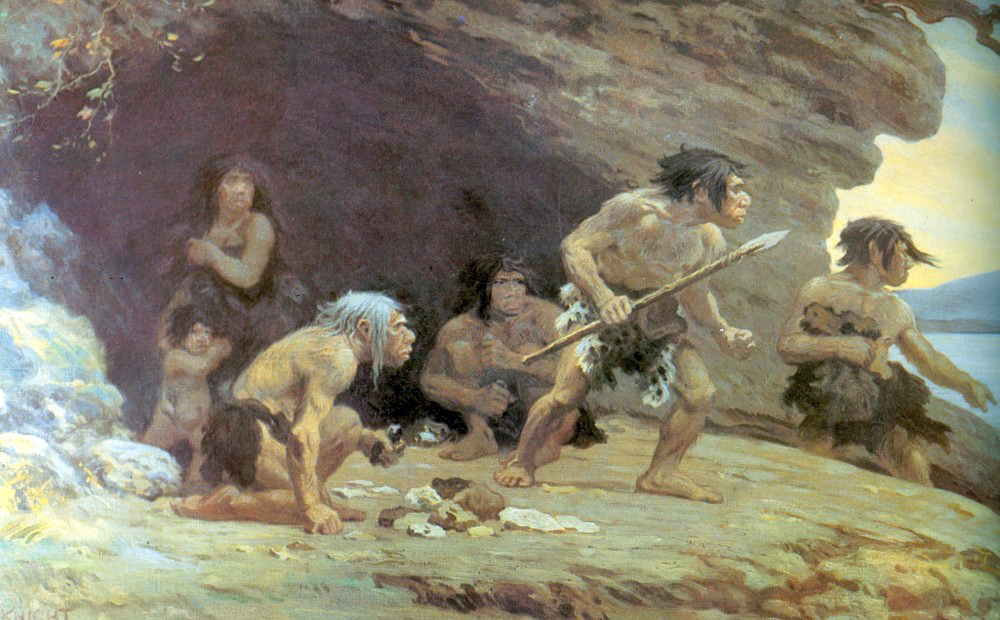
A lot of people have Neanderthal DNA in them.
On average, non-sub-Saharan Africans have around 1–4% Neanderthal DNA in them, while sub-Saharan Africans have roughly 0.3%. Overall, about 20% of the Neanderthal genome survives in human DNA today. Scientists first published the genome sequence of Neanderthals in 2010, with the results strongly suggesting that early modern humans and Neanderthals bred with each other in Eurasia during the ice age.
They consequently had offspring that had the genes of both Neanderthal and modern human parents. To further back up this claim, the Oase 1 and Oase 2 fossils from Romania shows an early European human that had around 5–11% and 6–9% Neanderthal DNA, respectively. This suggests a strong Neanderthal ancestry, around 4 to 6 generations earlier.
Today, the mitochondrial DNA of Neanderthals, which only the mothers can pass down to their children, don’t exist in human genes. This suggests that only female humans that bred with male Neanderthals could produce viable offspring that could reproduce. Male humans who mated with female Neanderthals were likely rare or produced sterile offspring.
Some scientists argue that the Neanderthals didn’t actually interbreed with humans, and that the pieces of DNA that exist in modern humans are only remnants from a common ancestor. However, this claim fails to explain why sub-Saharan Africans have close to zero Neanderthal DNA in them.
Neanderthal DNA contributes to a number of traits in some modern humans.
Most of the Neanderthal DNA that currently exists in modern humans is junk DNA that serves no specific functions. However, breeding with Neanderthals gave certain advantages to modern humans. Some of their DNA gave our ancestors a boost in immune functions, which helped ward off infections. Other parts of Neanderthal DNA contributed to a lighter skin pigmentation that helped early humans migrate and adapt to changing climate conditions. Furthermore, some genes likely contributed to the structure and function of the brain, body fat distribution, and muscle contraction.
However, interbreeding with Neanderthals isn’t all good, as some parts of their DNA also gave us some disadvantages. Parts of their DNA have implications related to major depressive disorder, diabetes, allergies, celiac disease, and excessive blood clotting. If you’re experiencing some allergies to animal fur and pollen, you can probably blame your Neanderthal ancestors for that, too.
Modern humans likely contributed to the Neanderthal extinction.
Scientists have stated many possible reasons as to why the Neanderthals went extinct, which all suggested that modern humans likely contributed to their demise. Many factors come into play when considering the role of anatomically modern humans in the extinction of Neanderthals. These factors include competition, violence, diseases, and extinction by interbreeding. When Homo sapiens met the Neanderthals in Eurasia, they likely competed for similar resources. At times, the conflict between the two human species resulted in outright violence. According to fossil records, some Neanderthals sustained injuries from lightweight, long-ranged weapons consistent to those that our hunter-gatherer ancestors used. Other fossil records also suggest that our ancestors slaughtered the Neanderthals and ate them.
Some scientists also postulate that humans simply survived longer than them instead of directly exterminating them. Modern humans likely spread out farther and wider than Neanderthals, giving them access to more resources. Furthermore, the clothes of modern humans likely provided them with better protection against the cold. Our ancestors’ inventiveness also gave them an advantage in a period of drastic climate change.
Interbreeding with other human species only played a small role in the decline of Neanderthal populations, given that it’s highly unlikely that Homo sapiens and Denisovans fully absorbed the whole species. Still, mating with other human species had a negative effect on Neanderthals because they became less likely to breed with their own species.
Other hypotheses include natural disasters and their failure to adapt to climate change. Most scientists believe that their demise stemmed from a combination of these factors rather than just one particular cause of extinction.

Neanderthals aren’t the only human species that modern humans interbred with.
There is strong evidence that modern humans and Neanderthals reproduced, given that a lot of humans contain their DNA, while some Neanderthals contained modern human DNA. However, Neanderthals aren’t the only human species that modern humans interbred with. The modern human genome actually contains sequences of at least four distinct human species: modern humans, Neanderthals, Denisovans, and another undiscovered species.
Denisovans could have mated with modern humans as recently as 15,000 years ago. A 2011 study revealed that Denisovan DNA is prevalent among Polynesians, Near Oceanians, Australian Aborigines, and East Indonesians. In particular, Melanesians have a large amount of Denisovan DNA, with around 4–6% of their genome coming from Denisovan ancestry.
Neanderthals also interbred with Denisovans.
Some fossil records reveal that Neanderthals also had hybrid babies with Denisova hominins, another extinct human species. A prime example of this is Denny (Denisovan 11), a 13-year-old girl who was half Neanderthal and half Denisovan. Denny lived around 90,000 years ago, and her fossilized remains were discovered at the Denisova Cave in 2012. To date, Denny is the most compelling evidence we have of interbreeding between different human species. That’s certainly one of the most interesting Neanderthal facts.
They had bigger brains than modern humans.
Neanderthal brains were bigger than those of present-day humans, and their larger braincases are a testament to this fact. On average, their braincases measured around 98″³ (1,600 cm³) for males and 79″³ (1,300 cm³) for females. In contrast, the braincases of present-day humans average at around 78″³ (1,270 cm³) for males and 69″³ (1,130 cm³) for females.
Bigger brains don’t necessarily mean they were smarter, however. They had a bigger occipital lobe, which is mostly in charge of vision. This goes in accordance with their larger eyes that possibly helped them adjust to the low-light conditions in prehistoric Europe. Also, a bigger portion of their brains were responsible for bodily control and maintenance. This made their cognitive areas proportionally smaller than modern humans, giving our ancestors an advantage in memory, learning, and decision making.
They were possibly capable of speech.
Cognitive scientist Philip Lieberman attempted to reconstruct the vocal tract of Neanderthals in 1971. He found that Neanderthals probably were capable of speech at a higher degree than non-human primates. However, they likely lacked the capacity to produce nasal sounds and were largely unable to articulate their speech.
Later discoveries pointed out that their hyoid bones, which humans use for speech, were similar to the hyoid bones of modern humans. This led some experts to postulate that these extinct humans had similar vocal abilities as modern humans. Still, some researchers argue that having nearly identical hyoid bones doesn’t definitively point out to a similar vocal tract anatomy.
Neanderthal voices were likely loud, raspy, and high-pitched.
From what we know about their anatomy, the voices of Neanderthals were likely loud, raspy, and high-pitched. This is in stark contrast to the popular media’s depiction of their voices, which typically portrays them as talking in low-pitched, ape-like grunts. Scientists concluded this from the shape of their throats, the dimensions of their skulls and chest, and their high lung capacity.
Like modern humans, they manufactured and used sophisticated tools.
Although a handful of intelligent animals exhibit tool use, the big brains of Neanderthals allowed them to also have a sophisticated form of technology. Neanderthals made tools out of animal bones, antlers, wood, and stone. They fashioned stone tools that required complex techniques to replicate, and they passed these techniques from generation to generation. These archaic humans even glued some of their tools together using birch bark tar.
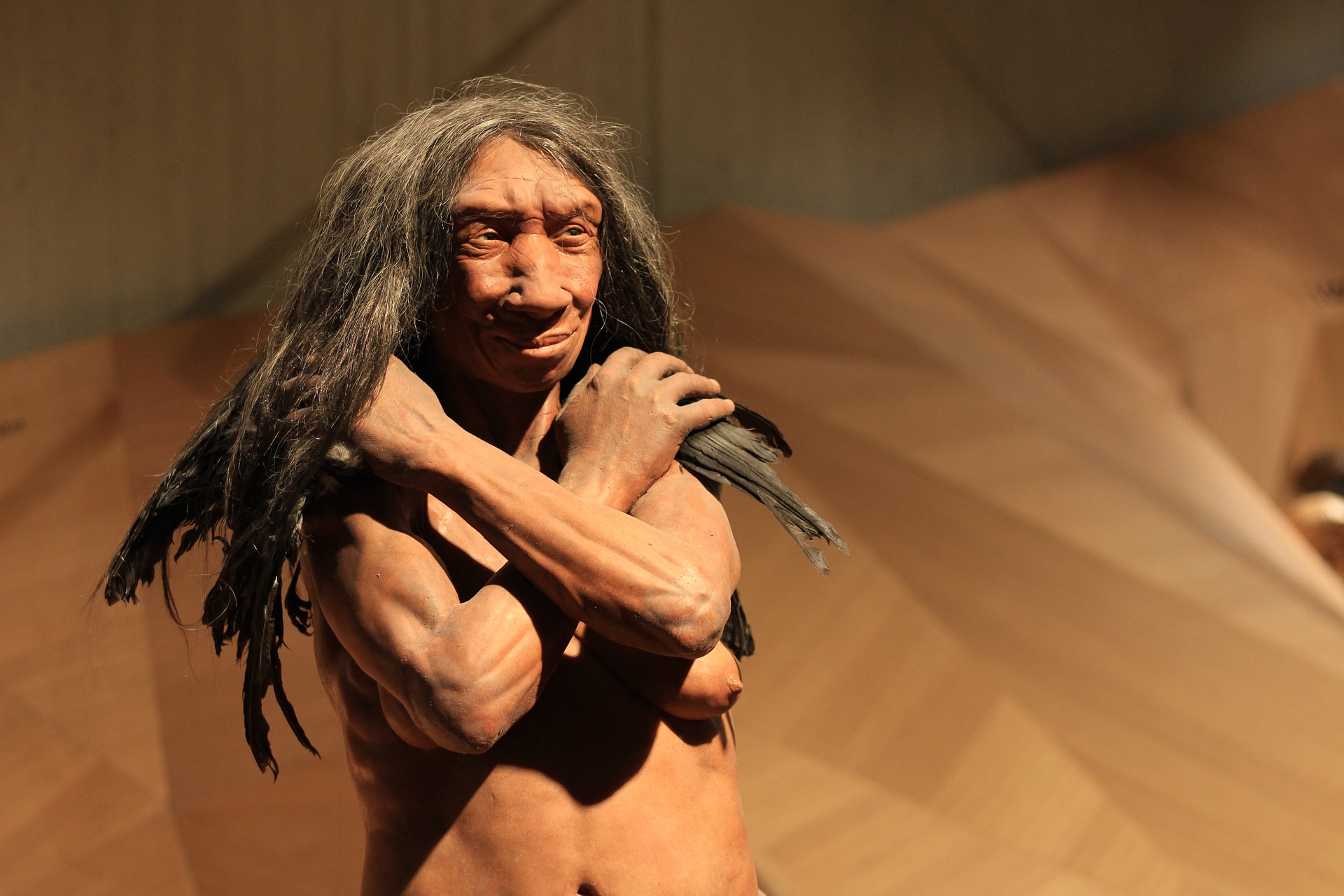
Some Neanderthals likely had red hair.
Scientists found that Neanderthal DNA contains genes that contribute to lighter skin and hair color. Lighter skin and hair colors were likely common due to the low-light environments in Europe. Genetic analysis also suggests that a few of them also had pale skin and red hair. Like modern humans, however, Neanderthals had a wide variety of skin colors depending on their home region.
Neanderthals made and wore clothes.
The Neanderthals lived in the Eemian interglacial period, a time when the average temperatures were as cold as 63.3°F (17.4°C) in July and 34°F (1°C) in January. Researchers even claim that the coldest days during this period even reached an estimated temperature of −22 °F (−30 °C). To survive the colder temperatures, some Neanderthals wore clothes fashioned out of animal hides. Some even suggest that they also wore footwear to protect their feet against the cold. According to fossil evidence, they also created strings and exhibited some basic knowledge of weaving and knotting.
Their clothes closely resembled simple ponchos rather than the more fitted clothes that early Homo sapiens wore, but the clothes still provided some protection against the cold. The Neanderthals that lived in warmer regions, however, likely walked around without clothes.
Like modern humans, Neanderthals also used fire to cook their food.
Despite having proportionally smaller cognitive areas in their brains, Neanderthals were still highly intelligent. Like our hunter-gatherer ancestors, they also learned how to control fire and used it to cook their food. Neanderthals had different methods of cooking, including roasting meat, boiling soup, and making stock from bone marrow. Since bone marrow increased their fat consumption, they were able to survive on a low-carbohydrate diet.
Neanderthal caves even had makeshift fireplaces in them, which suggests that they also used fire to keep them warm at night, especially during the winter. However, it’s unclear whether they knew how to create fire or just scavenged from wildfires.
They had a varied diet.
Like modern humans, Neanderthals were omnivores and fed on plants and animals. Some scientists thought that they were scavengers, but more recent studies show that they were predators that hunted their food. They ate a variety of food depending on what was available in the immediate vicinity. For example, communities who lived near bodies of water consumed aquatic resources such as fish, seals, dolphins, urchins, and shellfish. Forest-dwellers, on the other hand, ate more plants and small mammals. Those who lived in the steppes outside of the Mediterranean consumed larger animals such as deer and mammoths.
Fossil records show that Neanderthals ate a variety of plants and mushrooms. Interestingly, dental analysis also indicated that some of them may have also been vegetarian, foraging the forests for mosses, mushrooms, and nuts instead of eating meat. Other Neanderthals, however, preferred a more meat-based diet.
Neanderthals were skilled hunters.
The Neanderthals were likely ambush hunters that preferred close-ranged combat to take down their prey. They were risk-takers that even put their lives on the line to hunt their prey. Evidence shows that they thrust their weapons at close quarters instead of throwing them like modern humans. To catch smaller animals, they may also have used traps or chased them down. They may also have used darts as long-ranged weapons.
These early hominins also worked cooperatively with one another to hunt their prey animals, which was especially helpful in the dense forests they hunted in. Cooperation was important because it increased their chances of success, especially because they hunted large animals. Because they lived in rather small groups, everyone in the group participated in hunting activities, including women and adolescents.
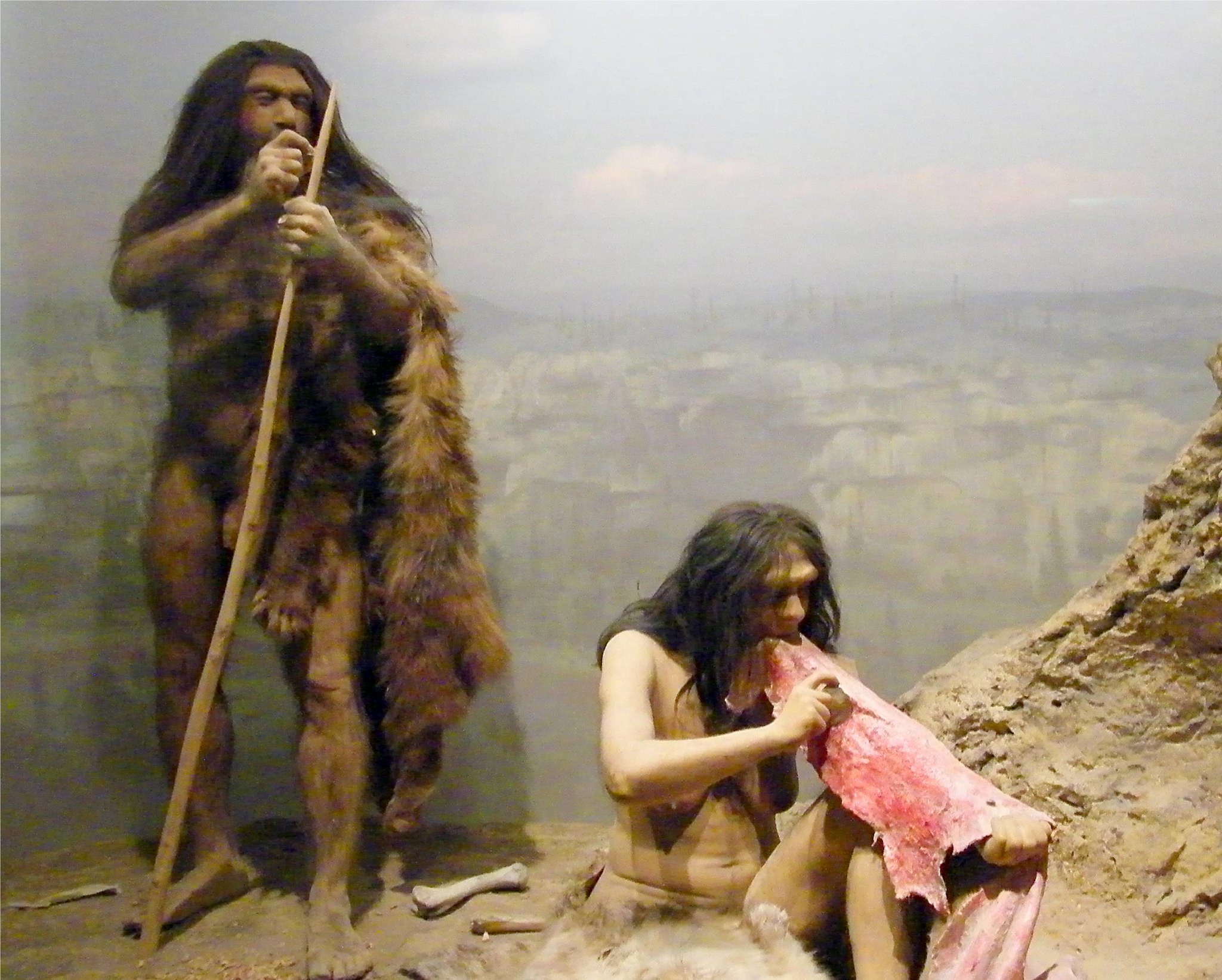
They didn’t hunt in broad daylight.
Because they lived in parts of the world that had shorter hours of sun, Neanderthals likely hunted when it was dark rather than in broad daylight. They were ambush hunters that went after big animals, and such predators mostly hunted at night. This could also explain their large eyes and brain regions related to vision.
They lived in groups of 10 to 30 individuals.
Similar to our hunter-gatherer ancestors, Neanderthals formed scattered groups averaging about 10 to 30 individuals, and they commonly lived together in caves. Some evidence suggests that they lived in nuclear and extended families, with multiple adults taking care of the children and adolescents. Similar to modern human nomads, the adolescents participated in activities such as hunting, gathering food, and other preparations.
Neanderthals also participated in arts and crafts.
One of the most surprising Neanderthal facts is that they had an eye for art and personal adornments just as early modern humans did. Researchers revealed that they used ochre, a type of clay pigment, as body paint. However, some experts suggest that they may have used ochre as insect repellent and medicine rather than purely for aesthetic purposes.
Neanderthals also collected a number of objects and made pendants out of them. These objects include crystals, shells, animal teeth, and ivory. Moreover, Neanderthals and modern humans typically didn’t consume crows and vultures, but their feathers and wing bones were found near Neanderthal fossils. The lack of bones from the more edible parts of the birds suggests that the Neanderthals may have used their flight feathers for decorative purposes.
Cave paintings in Spain also point to the participation of Neanderthals in art. The paintings existed before modern humans expanded their range to Western Europe, suggesting that Neanderthals made them. Some researchers also found markings that resembled engravings that could’ve been a form of abstract art, but some contend that they were merely bear scratches.
They may have made musical instruments.
There have been numerous reports on supposed Neanderthal musical instruments. The most prominent examples of these instruments are the flutes found in Slovenia and Hungary, made out of the bones of cave bears. Some researchers suggest that Neanderthals made these instruments, but some state that they originated from Cro-magnons or modern humans.
Other skeptics also argue that these bones weren’t flutes at all, with the holes caused by hyenas chewing on the bones. However, this hypothesis is unlikely because other cut marks weren’t typically present on these bone flutes.
Neanderthals took care of the disabled and elderly.
It turns out that Neanderthals weren’t just the savage brutes that we thought they were. There have been some fossil records of Neanderthals that were elderly or had disabilities and deformities that left them unable to survive alone.
One particular individual, whom the excavators named Nandy, lost an arm when he was young. His fossilized remains also had signs of a degenerative disease, as well as various injuries and deformities. Nandy had two broken legs, hearing loss, and total or partial blindness in one eye. Analysis shows that a lot of his injuries healed and he’d lived for quite some time before his death, but he was unable to take care of himself. He lived to around 30 to 45 years old, which was a remarkably old age for a Neanderthal. This suggests that other Neanderthals took great care of him even if he wasn’t able to contribute to their society.
Neanderthals had early forms of medicine.
Because Neanderthals employed such high-risk methods in hunting, they suffered a lot of injuries. However, their injuries showed signs of healing and evidence that they had some form of handling these injuries. Experts suggest they used early forms of medical care such as dressing wounds with bandages, putting splints on fractures, and the use of medicinal plants.
To treat injuries, the Neanderthals used common medicinal plants like poplar, chamomile, yarrow, ervil seeds, and grape vines for various conditions.
They buried their dead.
Perhaps the main reason why we’ve found a lot of Neanderthal fossils is that they occasionally buried their dead. They may have done this symbolically or perhaps just to mourn or prevent scavengers from consuming the bodies. Like modern humans, some individuals have even been buried with flowers in their graves. Neanderthals also took special care in burying children and infants, laying them to rest with several artifacts, engravings, and bones.
Neanderthals likely practiced some religious activities.
In some European caves, Neanderthals arranged the skulls and other bones of cave bears in a specific order, which suggests that they ceremoniously killed the bears as a cult. This behavior would be similar to the bear-related rituals that early modern humans exhibited.
Some archaeologists and paleoanthropologists also speculate that they had cults surrounding golden eagles because these birds apparently held an iconic significance to them.
Due to their small populations, they were susceptible to inbreeding.
Neanderthals had a smaller population than modern humans, which made it likely that they had a smaller social network. This made them susceptible to inbreeding because related individuals mated with each other.
Inbreeding played an important role in their further population decline because mating between relatives lead to an increase in birth defects, as well as increased chances of passing on negative traits and mutations.
Neanderthal women shared equal duties with their men.
Our hunter-gatherer ancestors had a more defined division of labor, with the men hunting and the women foraging. However, Neanderthals, did not exhibit the same division of labor. Perhaps because of their smaller populations, the women also participated in hunting along with men.
They made some interior designs in caves.
Neanderthals constructed ring structures in their caves using broken stalagmites, with several individuals working together to design and build these structures. Scientists still are unsure of the purpose of these structures, but these serve as testament to the more human-like behaviors of Neanderthals. Neanderthals also seemed to construct dwellings out of mammoth bones and have some knowledge of woodworking.
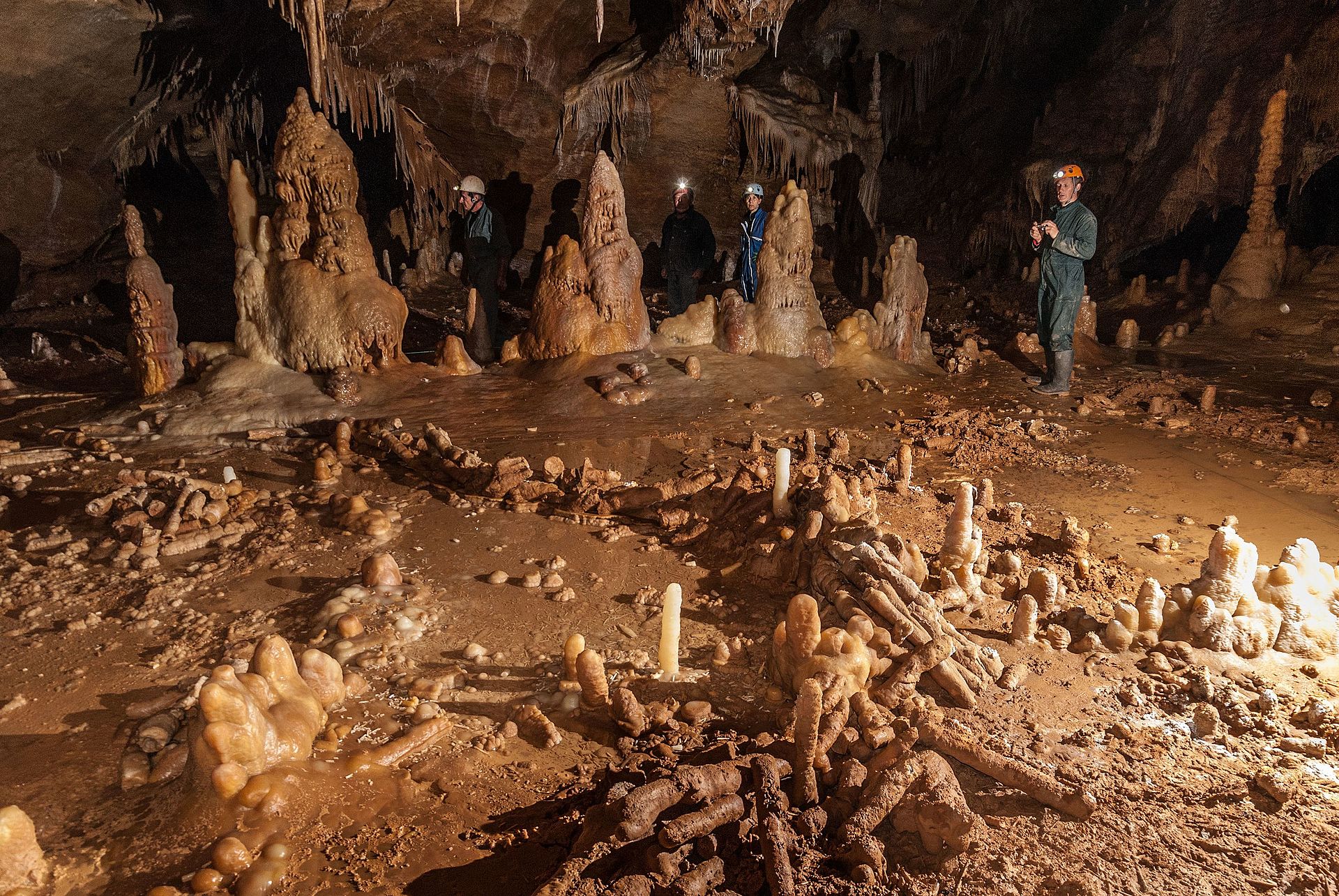
Neanderthals reached maturity faster than modern humans.
Based on the growth rate of their teeth, scientists speculate that Neanderthals reached maturity faster than modern humans. However, their life spans, gestation periods, and age of menopause were likely close to those of modern humans.
Some of them practiced cannibalism.
Cueva del Sidrón, a cave in northern Spain, contained the fossilized bones of a family of Neanderthals. The family consisted of 13 individuals, with seven adults, three adolescents, and three children – including an infant.
Their bones exhibited traces of butchering and cutting, indicating that other Neanderthals may have cannibalized them, likely due to food scarcity brought on by climate change. Some experts, however, suggest that modern humans butchered and ate this family of Neanderthals.
Creationists denied that Neanderthals were a separate human species or subspecies.
Up until the late 1970s, creationists speculated that the fossils of Neanderthals were only modern humans with arthritis or acromegaly. Early scientists, however, contended that the existence of Neanderthals backs up Darwin’s theory of evolution.
Was this page helpful?
Our commitment to delivering trustworthy and engaging content is at the heart of what we do. Each fact on our site is contributed by real users like you, bringing a wealth of diverse insights and information. To ensure the highest standards of accuracy and reliability, our dedicated editors meticulously review each submission. This process guarantees that the facts we share are not only fascinating but also credible. Trust in our commitment to quality and authenticity as you explore and learn with us.
